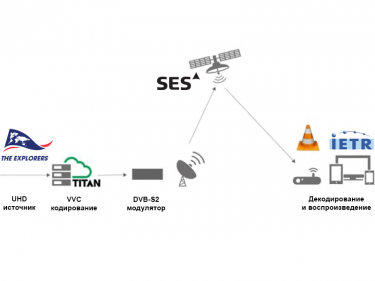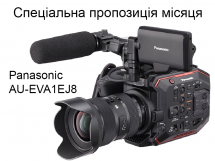| Українська | English | |||||||||||
|
|||||||||||
| News | About company | Service-centre | OB Van/SNG Rental | NextGen Energy Solutions | Contact us |
|
|
Engineering Service, Inc.
» News News Ateme is partnering with SES, Videolabs and IERT for the first end-to-end UHD satellite broadcast transmission using the Versatile Video Coding (VVC) standard, the company announced. The test transmission is using an SES satellite positioned at the 28.2-degree East orbital position and is relaying a 4K UHD video stream using VVC. Versatile Video Coding offers a 50% efficiency improvement over HEVC, the company says.
Source UHD video is being encoded with VVC and encapsulated in MPEG-TS using Ateme’s Titan Live video processing platform. The streams are modulated using DVB-S2 and broadcast via an Astra 2E transponder that covers all of Europe, the company said. On the receive side, the signal is being demodulated by a DVB-to-IP gateway. It is then forwarded to the VLC player that displays the video in real-time using the OpenVVC decoder from IETR. The test demonstrates key benefits of VVC, including optimized bandwidth efficiency, increased audience reach and improved QoE (quality of experience). VVC, a versatile new standard that covers a variety of applications—from broadcast to OTT delivery, improves on High Efficiency Video Coding (HEVC) compression efficiency by 50%, said Ateme. The Joint Video Experts Team developed VVC. The team consists of experts from ISO/IEC MPEG and ITU-T VCEG. « To the list of news |
|
|||||||||||||||||
 |
+38 (044) 593-18-20 +38 (073) 593-18-20 +38 (096) 532-96-82 +38 (095) 532-96-82 Service center Telegram @Engineer_Service |

|
|
|||||
 |
e-mail: engineer-service.tv 15 Vavylovykh str., Kiev, 04060, Ukraine Authorized service centre of Panasonic, Sony, JVC, Fujinon, Canon |
|||||||







